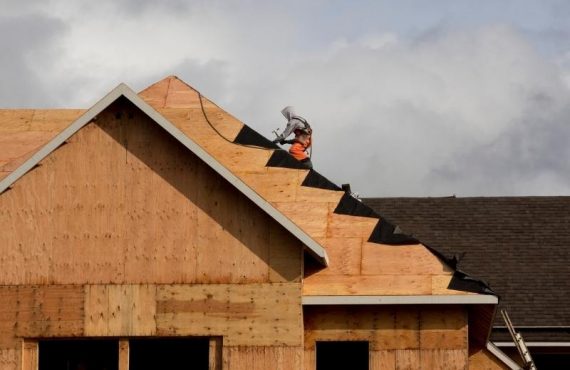What “Winter Whiplash” Does to Your Roof

 Ever heard of “winter whiplash?” If last month’s extreme (and we do mean extreme) low temperatures in the upper half of the country didn’t initiate you, let us!
Ever heard of “winter whiplash?” If last month’s extreme (and we do mean extreme) low temperatures in the upper half of the country didn’t initiate you, let us!
Winter whiplash is a term meteorologists use to describe particularly dramatic shifts in temperature. Some parts of the country recently experienced temperature shifts of anywhere from 40-60 degrees in a single day.
Here in the south, we just call it “weather.”
What Does Winter Whiplash Mean in the South?
For us Georgians, winter whiplash usually happens at least a couple of times a year. It’s defined by extreme temperature changes, like a 31 degree Tuesday followed by a 74 degree Wednesday, but it’s particularly noticeable when precipitation is involved.
A lot of our winter storms are often accompanied by whiplash. Ice storms in particular can be very dangerous if followed by a spell of warmer weather that causes the ice to melt off rapidly. Warm weather followed by very cold weather can mean just the opposite, coating everything in a dangerous layer of ice.
How Does Winter Whiplash Affect Your Roof?
As you probably already know, extreme temperature swings aren’t great for your roof, especially when there’s moisture. When water freezes, it expands. On your roof, this can equate to cracked shingles, bent flashings, and leaks. The more often this happens, particularly if water freezes and melts several times in a row over a week of wacky weather, the more likely to are to experience issues.
When roofing materials are very cold, they also become brittle. This makes them more likely to break in the event they’re struck by a falling tree branch, for example, or to crack under the strain of excessive ice. Although ice dams aren’t really much of a concern here in the south, our wild winter weather absolutely can be.
What Can You Do to Protect Your Roof from Weather Whiplash?
One of the absolute best ways to protect your roof from extreme changes in temperature is to be sure the ventilation system in your attic is appropriate. If too much heat becomes trapped or flows out of your attic, ice issues are sure to follow. Remember that insulation itself is only half the equation; considering the functionality and positioning of vents is essential.
It’s also critical to have your roof inspected at the first sign of condensation inside your home. Ideally, you’ll have had your roof inspected prior to winter but if you didn’t, that’s okay! Roofers work during the winter, too. If you notice condensation forming in your attic or if you’re having unusual problems with ice on your roof, call a roofer. Odds are you’ve got a temperature imbalance somewhere that’s going to set you up for trouble down the road.
Has it been a while since you’ve had your roof inspected? Spring is one of the busiest times of year for roofers in Georgia, so call now to schedule your inspection before things book up. Accent Roofing is your Georgia roofing expert and we know exactly how to protect your roof from the whims of Mother Nature.
Accent Roofing is your professional roofer in Georgia
Contact us to schedule your FREE roofing inspection today:
Call us at 1-770-769-1808
The post What “Winter Whiplash” Does to Your Roof appeared first on Accent Roofing Service.
Source: Roofing Maintenance
































No comments yet.